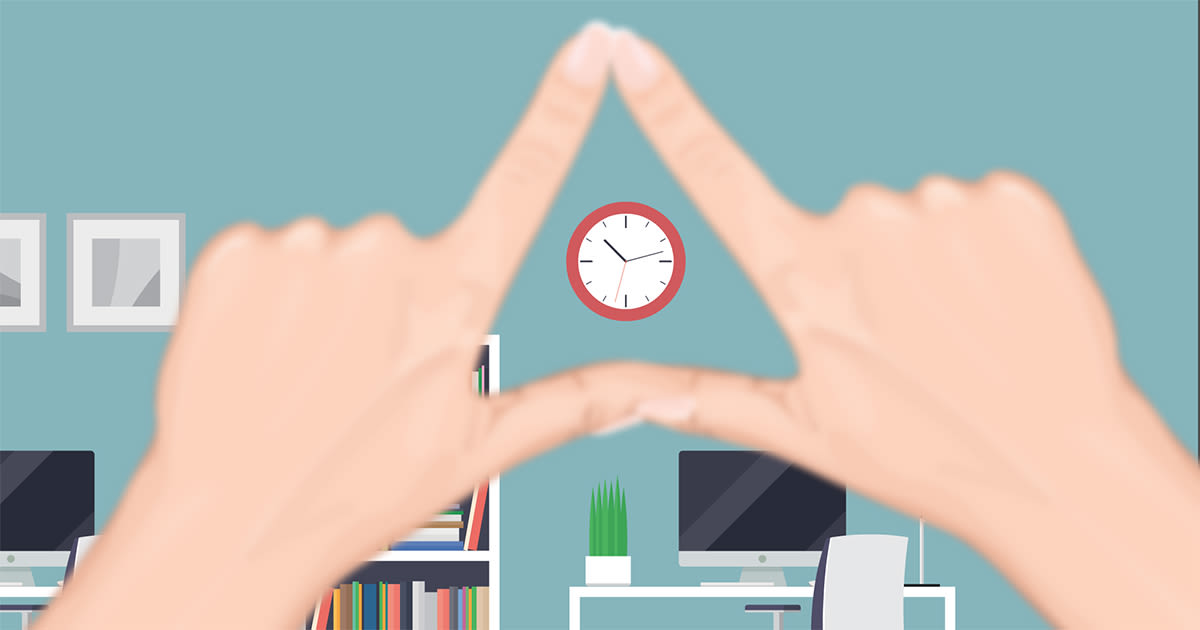Dominant eye test: How to find your dominant eye

Have you heard the terms “dominant eye” and “ocular dominance” but aren't sure what they mean or how you perform a dominant eye test? Here are the basics...
Dominant eye: What is it?
Your dominant eye is the eye that provides a slightly greater degree of input to the visual part of your brain. It also more accurately relays information about the location of objects.
Most of the time, the term “dominant eye” is used when describing the normal visual condition in which the two eyes function well as a team. Plus, the two eyes have equal visual acuity. One eye is simply the “leading” or preferred eye.
But sometimes, “dominant eye” is used to describe the normally sighted and functioning eye in dysfunctional cases of amblyopia and strabismus.
| Which is your dominant eye? |
|---|
| If you're unsure which is your dominant eye, you can find out by taking our dominant eye test. But even better, you could check in with your local eye doctor! It's vital to the health of both your eyes and your vision to keep up with routine eye exams anyway. Plus, an eye doctor can help you figure out which is your dominant eye. They can also help you understand what this means for the way you see the world. |
Dominant eye test
Here’s a simple dominant eye test to determine which eye is your preferred eye:
Extend your arms out in front of you. Create a triangular opening between your thumbs and forefingers by placing your hands together at a 45-degree angle. (See animation at the top of the article.)
With both eyes open, center this triangular opening on a distant object — such as a wall clock or door knob.
Close your left eye.
If the object stays centered, your right eye (the one that’s open) is your dominant eye. If the object is no longer framed by your hands, your left eye is your dominant eye.
Here’s another easy dominant eye test:
Extend one arm out, holding the thumb of that hand in an upright position. (Or you could use your index finger instead of your thumb.)
Keeping both eyes open and focused on a distant object, superimpose your thumb on that object. (Don’t worry if it looks like your thumb partially disappears — that’s normal.)
Alternately close one eye at a time.
The eye that keeps your thumb directly in front of the object while the other eye is closed is your dominant eye.
Both of these dominant eye tests are categorized as “sighting” tests. This is because they involve aligning a visual target with a makeshift sighting device (mimicking the “sight” on the barrel of a rifle).
Some studies have shown that sighting dominant eye tests are simple to perform and generally accurate. However, they can be affected by handedness (see below) and other non-visual factors.
So, some researchers argue that non-sighting dominant eye tests may be a more accurate way to determine eye dominance. (Eye dominance is also called ocular dominance).
In these tests, the subject keeps both eyes open, and visual stimuli are presented to each eye separately with the use of special optical devices. But this is the limitation of non-sighting dominant eye tests. The equipment and expertise required to perform them typically are found only in specialized vision clinics or research facilities.
In most cases, simple sighting eye tests like those described above will accurately identify your dominant eye.
Eye dominance and handedness
Eye dominance and handedness (being right-handed or left-handed) are not directly related. But these traits are significantly associated. Population studies show that about 90% of people are right-handed and about 67% are right-eye dominant.
Research has shown that the odds of a person who is right-handed being right-eye dominant are high. In fact, odds are approximately 2.5 times greater than the odds of that person being left-eye dominant.
But it is impossible to accurately predict eye dominance based on handedness alone.
No dominant eye: Is it possible?
Is it possible to not have a dominant eye? Perhaps, but it would be uncommon.
If a strong degree of dominance is not clear in a dominant eye test, it’s more likely a person has mixed ocular dominance. This is also called alternating ocular dominance. In this case, one eye is dominant for certain functions or tasks, and the other eye is dominant at different times.
Some people may perform a sighting dominant eye test and find that the visual target is not perfectly aligned with either eye. This may be true with the triangular opening between their hands or with their thumb (depending on which type of sighting test they perform).
There is a spectrum of degree of eye dominance among individuals. (The same is true for handedness.) In other words, some people may have one eye that is very dominant. Others may have less of a difference in the dominance of their two eyes.
To some degree, however, eye dominance is hardwired in your brain.
Within the visual cortex (the part of the brain that processes visual information) are stripes of nerve cells (neurons) called dominant eye columns. These bands of neurons seem to respond more to input from one eye or the other. They are also more important to the development of binocular vision.
But researchers also believe there is some overlap and plasticity in these dominant eye columns. This suggests that eye dominance can be variable, alternating and even incomplete in some individuals.
Dominant eye in shooting, photography and sports
So what’s the practical importance of performing a dominant eye test?
Knowing which eye is your dominant eye can help you perform better in a variety of activities. Here are a few common examples:

If you are right-handed but your dominant eye is your left eye, this cross-dominance can pose challenges for shooting accuracy.
Dominant eye in shooting
Having trouble hitting moving targets with your rifle? It could be that you have crossed dominance. This means your dominant eye and dominant hand are on opposite sides of your body.
For example, if you are a right-handed (and therefore right-shouldered) shooter but have a dominant left eye, you may find yourself shooting behind a left-to-right moving target and in front of a right-to-left moving target. Being aware of this will help you make the correct adjustments to improve your shooting accuracy.
Another option to compensate for cross-dominance is to keep both eyes open until just before you take your shot. Keeping both eyes open enables you to use 100% of your peripheral vision and depth perception to get ready for the shot. Closing your cross-dominant left eye just before the shot lets you make the last-second adjustment to better align the barrel of your rifle with the moving target.
Dominant eye in photography
Knowing which eye is your dominant eye is important when composing a photograph by looking through the viewfinder of a digital single lens reflex (DSLR) camera or similar film camera.
Using your dominant eye will give you an accurate preview of the actual shot. Using your non-dominant eye will cause certain details to be slightly displaced laterally or off-frame.
Dominant eye in sports
If (like most people) you’re right-handed and have a dominant right eye, certain sports will require you to position your head properly. This will enable you to take full advantage of your dominant eye.
For example, in baseball or softball, you need to turn your head enough when batting so your dominant right eye can see the rotation, speed and position of the approaching pitch. The same is true for cricket.
Another example is golf. Proper alignment of putts (and even fairway shots and drives) requires adequate head turns. This is vital to fully use your dominant right eye to visualize the shot you’re about to take. It's also important to accurately position your body and club head to achieve it.
If you are serious about sports and are looking for guidance on how to best use your eyes to enhance sports performance, consider visiting an eye doctor who specializes in sports vision.
Page published on Wednesday, February 27, 2019




